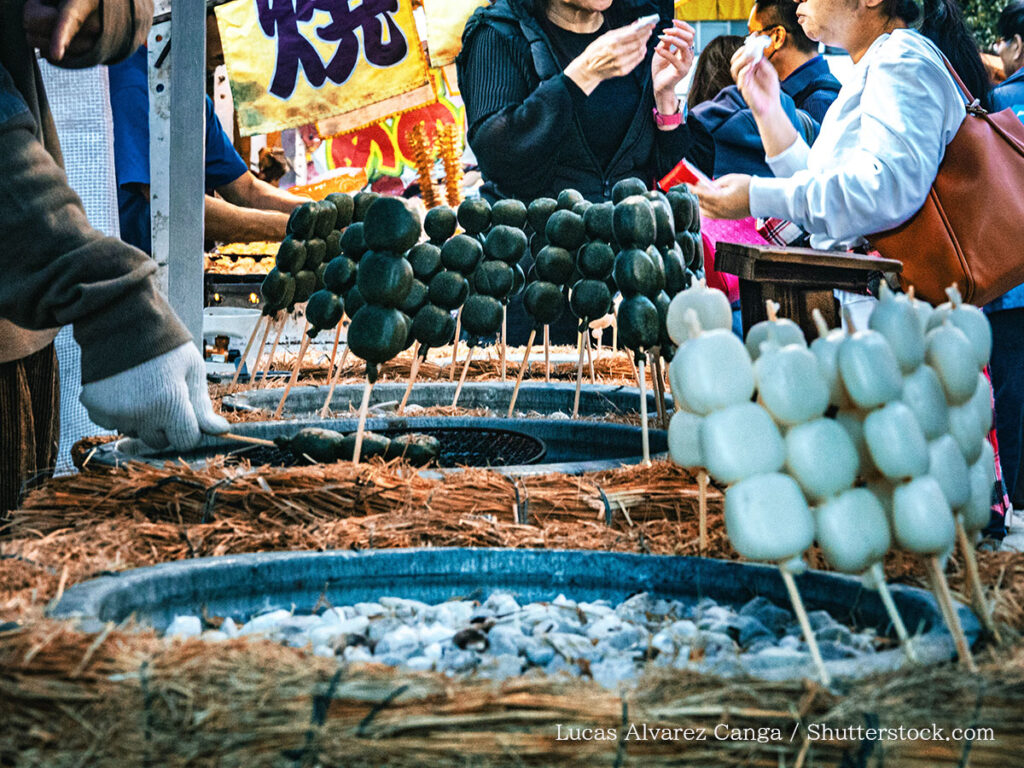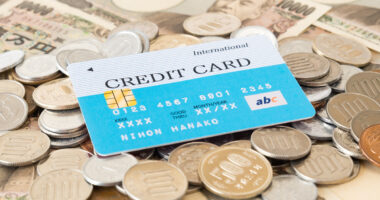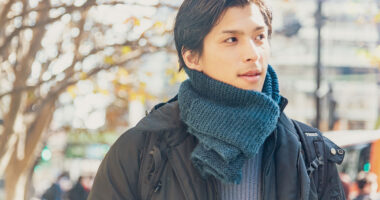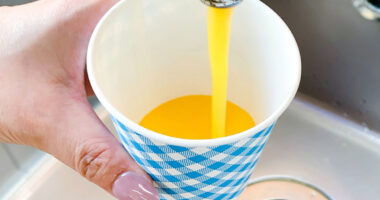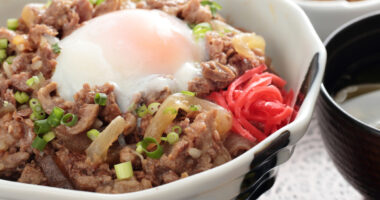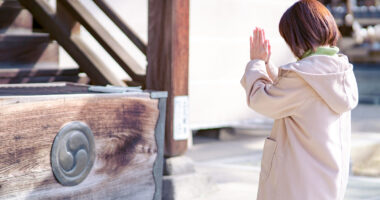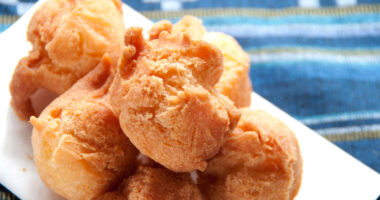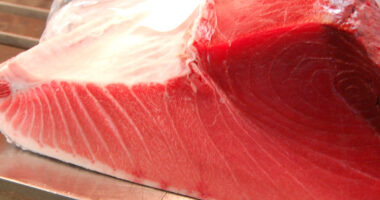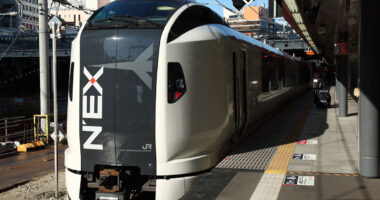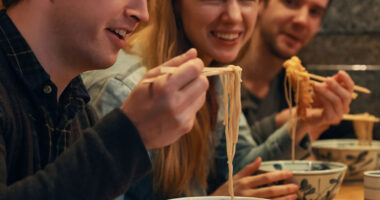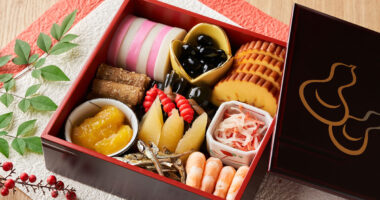Dango — round Japanese sweet dumplings typically served on a skewer — are a common sight on the streets when traveling in Japan.
This traditional confection with its chewy texture has been loved by the Japanese for centuries. Dango are simple sweets made by kneading rice flour with water, shaping into balls, then boiling or steaming them. Despite their simplicity, they come in a wide variety of types and flavors, ranging from the sweet-and-savory mitarashi sauce to beautiful seasonal tri-color varieties, each carrying deep meanings and origins.
For those planning a trip to Japan, understanding the background and characteristics of dango will enhance your appreciation of Japanese culture and cuisine when you taste them locally.
Basic characteristics and definition of dango
Dango is one of Japan’s representative wagashi (traditional sweets), beloved as round, skewered treats. Its defining feature is the unique chewy texture created from simple ingredients.
Ingredients and preparation of dango
The main ingredients of dango are simply rice flour and water, kneaded together and shaped into balls, then boiled or steamed to completion.
A key point in making dango is the ratio of rice flour to water. Too much water makes the shape fragile, while too little makes the dango hard. Skilled artisans use their experience and technique to find the perfect balance and produce delicious dango.
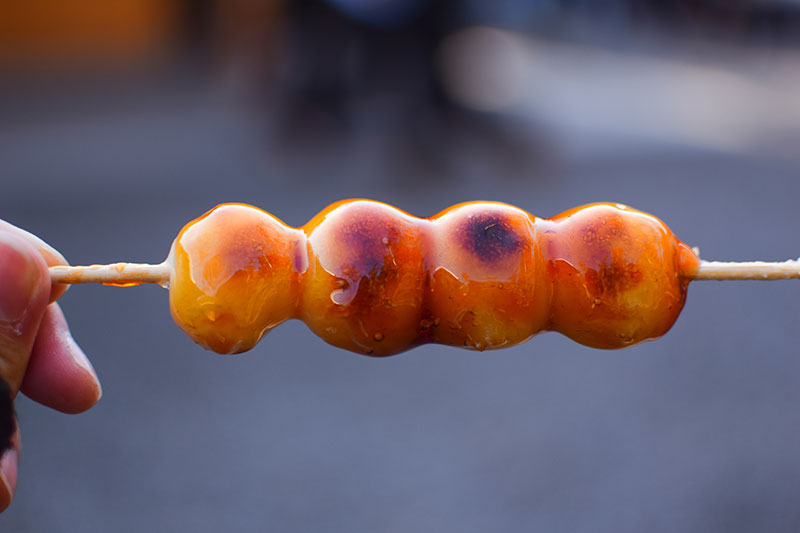
Dango (photo for illustrative purposes only)
The difference between dango and mochi
A common confusion for many international visitors to Japan is the difference between dango and mochi. Dango is made by kneading rice flour with water, whereas mochi is made by steaming and pounding glutinous rice. This difference in preparation results in distinct textures and shapes.
Dango tends to have a firmer texture and holds its shape well, making it easy to carry on a skewer. Mochi is softer and stickier, allowing for fillings like sweet red bean paste and various molded shapes. Additionally, dango are typically small spheres, while mochi is often flattened or formed into larger blocks.
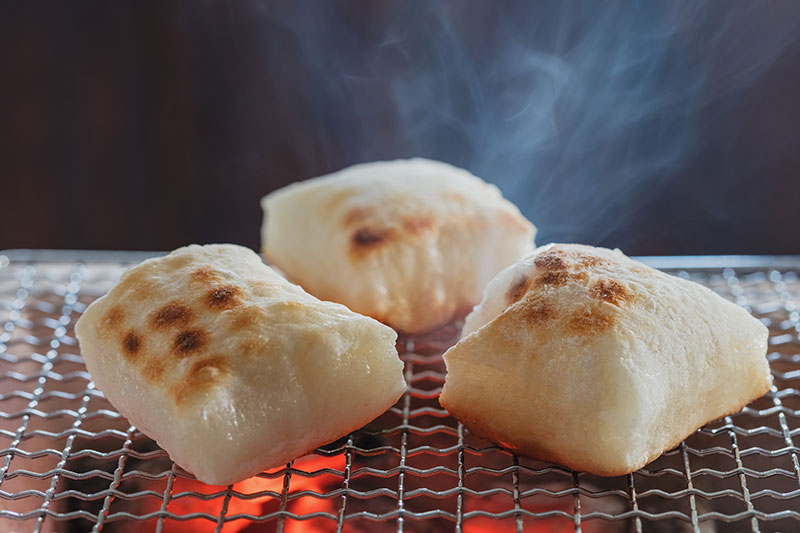
Mochi (photo for illustrative purposes only)
The shape of dango and the meaning of skewering
The characteristic style of skewering dango actually holds a deep meaning. The style of skewering five dango balls represents the shape of a person.
The five dango symbolize the human head, both arms, and both legs, and this arrangement is meant to ward off evil spirits and pray for health. This spiritual significance is one reason why dango has become more than just a sweet, embedding itself in Japanese culture. The skewer also makes it easier to eat, making it ideal for eating while walking at festivals and fairs.
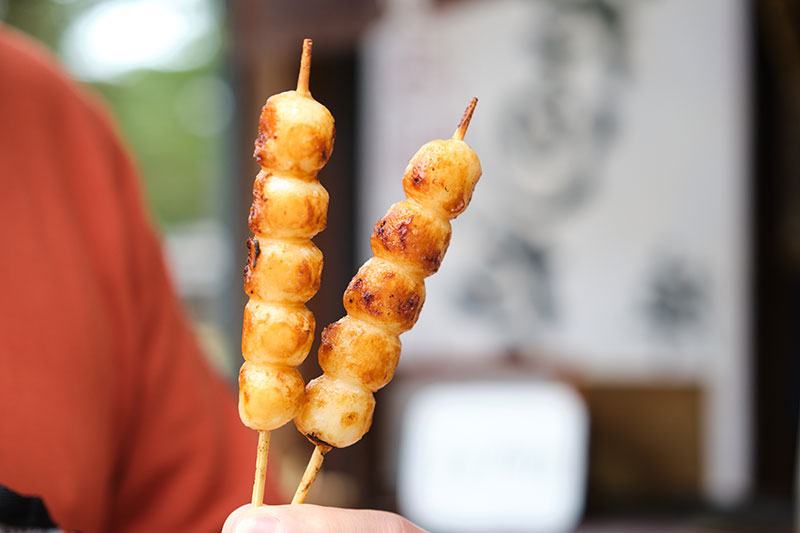
Five-dango skewer (photo for illustrative purposes only)
History and cultural background of dango
Dango has a long history with various theories about its origin, closely linked to the development of Japanese food culture. Understanding its evolution up to the present helps deepen appreciation for Japan’s traditional culture.
Origin and development from ancient times
There are several theories on the origin of dango, but the most accepted is that it began as primitive dumplings made by mixing rice porridge with nuts and shaping them into balls. These early dango were valued as portable, long-lasting food and spread among travelers and farmers. Over time, preparation and flavoring were refined to approach the form we know today.
By the Heian period (794 to 1185 AD), dango was consumed by nobles and used in seasonal events and rituals, gaining cultural and religious significance beyond just food.
The birth of mitarashi dango and Kyoto’s influence
One of the most popular dango varieties today, mitarashi dango, is said to be inspired by five bubbles appearing in the Mitarashi Pond at Shimogamo Shrine. The dango’s five dumplings mimic their form and also serve as offerings to the gods.
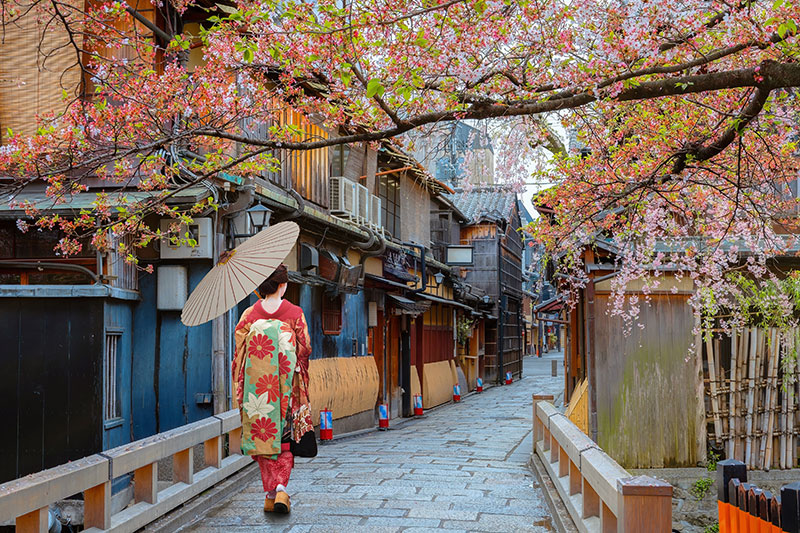
Photo for illustrative purposes only
The characteristic sweet-and-savory Mitarashi sauce is soy sauce-based with a unique flavor balancing sweetness and saltiness perfectly. The sauce, made by simmering sugar, soy sauce, mirin, and potato starch, gives the dango a rich taste and smooth texture. Originating in Kyoto and spreading nationwide, Mitarashi dango now holds a place as a quintessential Japanese wagashi.
Seasonal festivals and dango
Dango culture in Japan is closely tied to seasons and festivals. Spring Hanami dango and autumn Tsukimi dango reflect the Japanese sensitivity to seasonal changes.
Tsukimi dango, traditionally offered during the Mid-Autumn Moon Festival on the 15th day of the 8th lunar month, are usually stacked in a pyramid of 15 balls, reflecting the festival’s date, to express gratitude to the moon. This custom has long been practiced, symbolizing thanks for the moon’s blessings and hopes for a bountiful harvest. Some regions place a yellow dango on top to represent the full moon, creating a visually beautiful tradition.
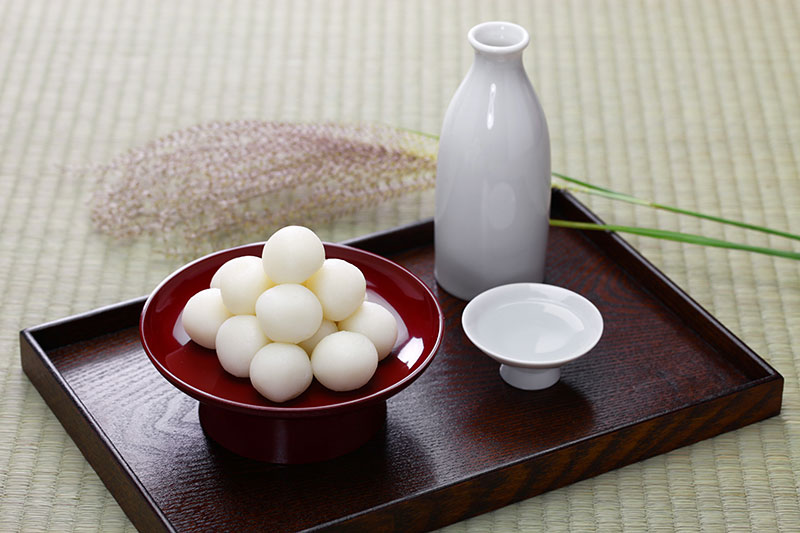
Tsukimi dango (photo for illustrative purposes only)
Popular types of dango and their features
Japan offers a wide variety of dango that differ by region and season. Each has its unique taste and characteristics, providing travelers with a diverse culinary experience.
The charm of mitarashi dango
Mitarashi dango is among the most popular dango in Japan, enjoyed year-round everywhere. Its hallmark is the sweet-and-savory soy sauce-based glaze, and a slight char on the dango surface is often a mark of traditional mitarashi dango. The sauce is made by simmering sugar, soy sauce, mirin, and potato starch, resulting in a thick texture and deep flavor.
When eating mitarashi dango, the common way is to hold the skewer and take bite-sized portions carefully to avoid dripping sauce.
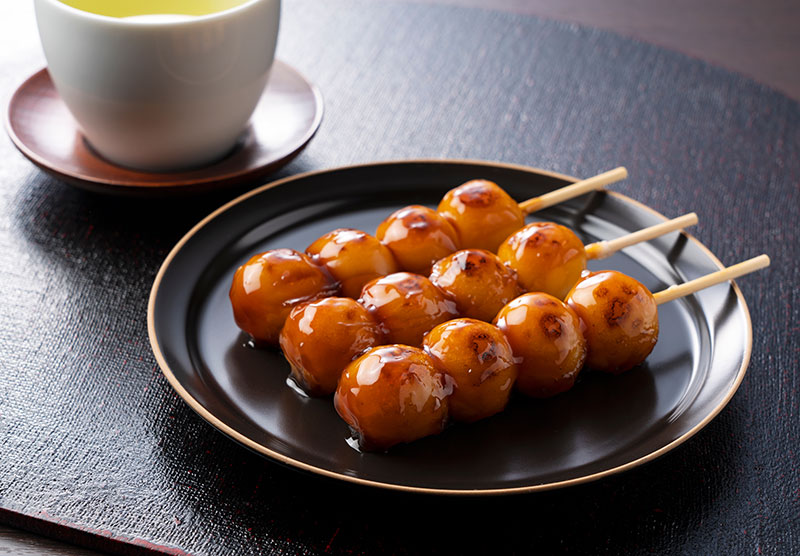
Mitarashi dango (photo for illustrative purposes only)
The colorful beauty of hanami dango
Hanami dango, associated with spring, is composed of three beautiful colors: pink, white, and green. These colors represent cherry blossoms, snow, and fresh greenery, visually expressing the transitions of Japanese spring. Each color has a distinct flavor — pink with cherry leaf, green with mugwort aroma.
Hanami dango is made seasonally, typically enjoyed from late March to early May during cherry blossom viewing. Eating hanami dango under cherry blossom trees is a symbolic scene of Japanese spring. Their beautiful colors also make them popular on social media.
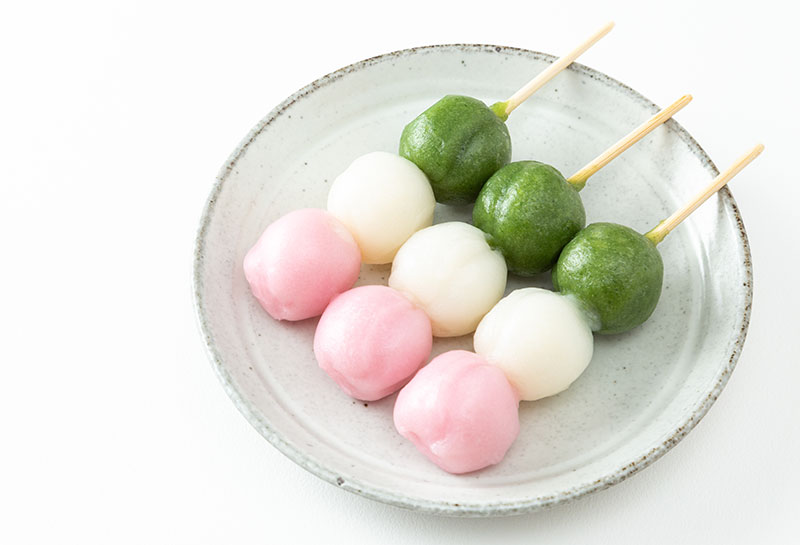
Hanami dango (photo for illustrative purposes only)
The traditional sweetness of anko dango
Anko dango features dango topped with generous amounts of anko (sweet red bean paste), a classic Japanese dessert. The chewy dango and smooth anko pairing is a beloved, long-standing favorite among Japanese people. The sweetness of anko enhances the plain flavor of dango, delivering an elegant sweetness.
There are two types of anko: tsubuan (chunky) and koshian (smooth). Tsubuan retains some bean texture, offering a rustic flavor, while koshian is finely sieved for a refined sweetness. Both pair excellently with dango and go perfectly with tea.
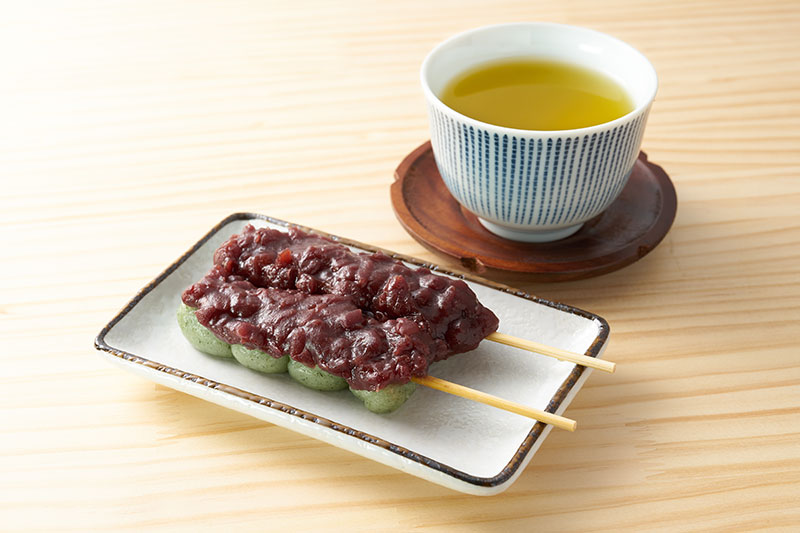
Anko dango (photo for illustrative purposes only)
The nutty aroma of kinako dango
Kinako dango are coated with roasted soybean flour (kinako), giving a distinctive nutty aroma. The rich fragrance and natural sweetness of kinako harmonize with the chewy texture of dango, creating a simple yet deep flavor. Since it also contains soybean protein, kinako dango is nutritionally beneficial as well.
Its relatively simple taste makes kinako dango ideal as a tea snack. It pairs especially well with green or bancha tea, where the kinako aroma softens the bitterness of the tea, enhancing each other’s flavors. The powdery kinako also melts in the mouth, adding to the appeal.
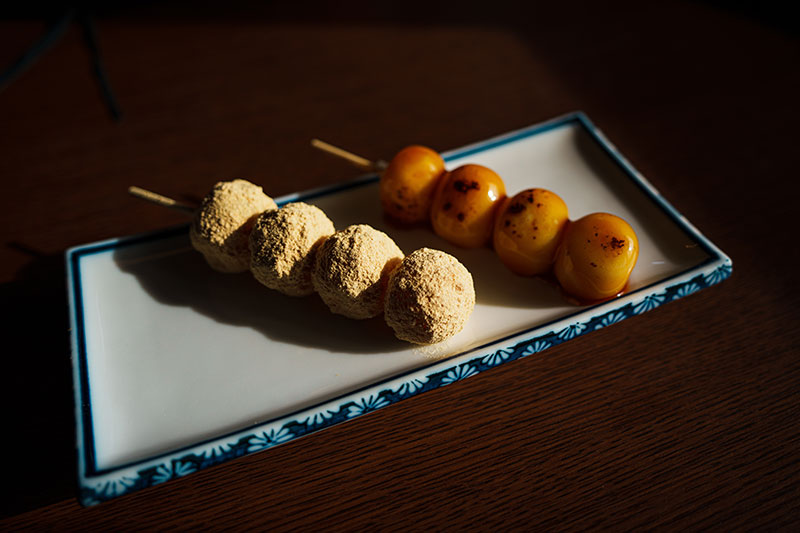
Kinako dango (photo for illustrative purposes only)
Where to enjoy dango and how to eat them
There are many places to enjoy dango during your trip to Japan, each offering a different atmosphere and experience. Knowing proper ways and manners enriches your cultural experience.
Authentic dango at wagashi shops
For the most authentic dango experience, visiting a long-established wagashi shop is recommended. There, artisans handcraft dango with great care. Many wagashi shops with seating serve dango paired with green tea, allowing you to enjoy traditional Japanese tea culture in a calm setting.
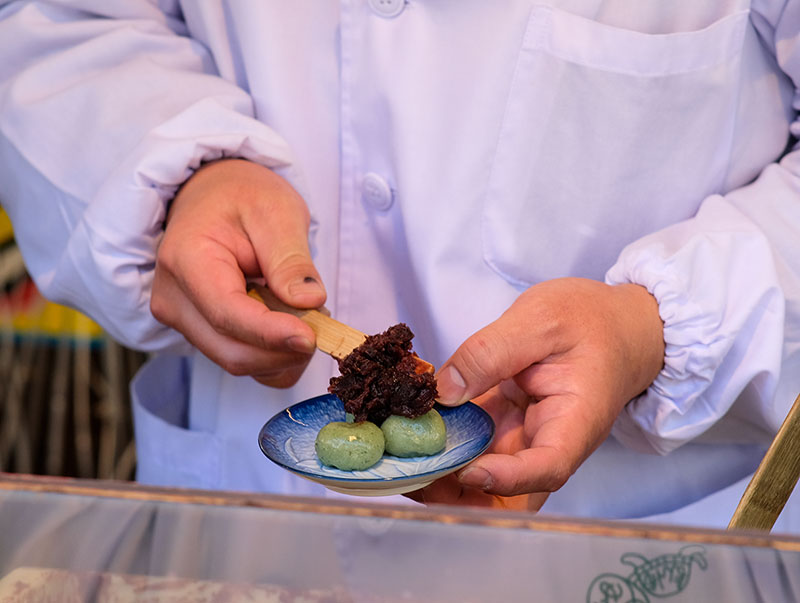
Photo for illustrative purposes onlye
Wagashi shops also often offer seasonal special dango like cherry blossom hanami dango or autumn chestnut varieties, which can only be enjoyed at specific times of the year. Conversations with shop owners may provide insights into dango history and making.
Eating dango while walking at festivals and fairs
Eating dango at Japanese festivals and fairs offers a unique cultural experience. Dango grilled over charcoal at street stalls is served with a fragrant aroma, letting you enjoy it while soaking up the lively festival atmosphere. Grilling adds a smoky flavor distinct from wagashi shop dango, delivering a rustic taste.
Dango at festivals are often reasonably priced, making them easy to try. Experiencing dango amid the festival bustle lets you feel Japan’s common folk culture firsthand. Wearing a yukata and walking with dango in hand is truly a summer tradition in Japan.
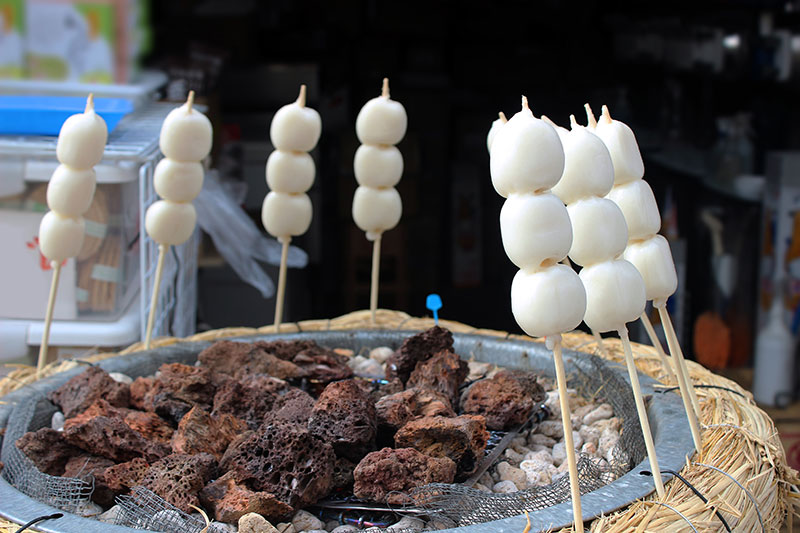
Photo for illustrative purposes only
Convenience store dango for quick and easy enjoyment
Nowadays, you can easily purchase dango at convenience stores in Japan, usually available 24/7 — perfect for a quick snack while traveling. Convenience store dango are individually packaged and hygienic, with reasonable prices making them a good entry point for first-time dango tasters.
Convenience store dango quality has improved, with many products made by major wagashi manufacturers. Classic flavors like mitarashi, anko, and kinako are widely available, allowing you to try different varieties during your stay. Heating them in a microwave makes them even more delicious.
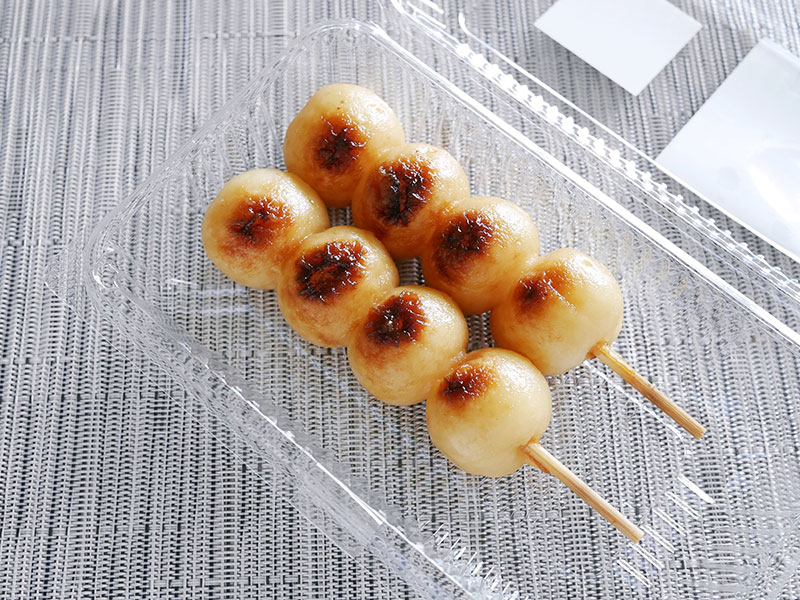
Photo for illustrative purposes
Proper way and manners for eating dango
To enjoy dango deliciously, there are some points to keep in mind. First, eating dango while warm, such as when freshly grilled or reheated, often enhances their flavor and texture. The basic way is to hold the skewer and eat one bite at a time; removing dango from the skewer before eating is uncommon. Eating dango on the skewer lets you enjoy it without dirtying your hands.
| Type of dango | Recommended way to eat | Best drink pairing |
|---|---|---|
| mitarashi dango | Eat warm, one bite at a time | green tea, sencha |
| anko dango | Eat anko and dango together | matcha, hojicha |
| kinako dango | Savor the kinako flavor slowly | bancha, barley tea |
| hanami dango | Taste the three colored dango one by one | sakura tea, green tea |
When eating dango, be careful not to get sauce or powder on your clothes. Mitarashi dango’s sticky sauce, in particular, requires holding the skewer at the right angle to avoid dripping.
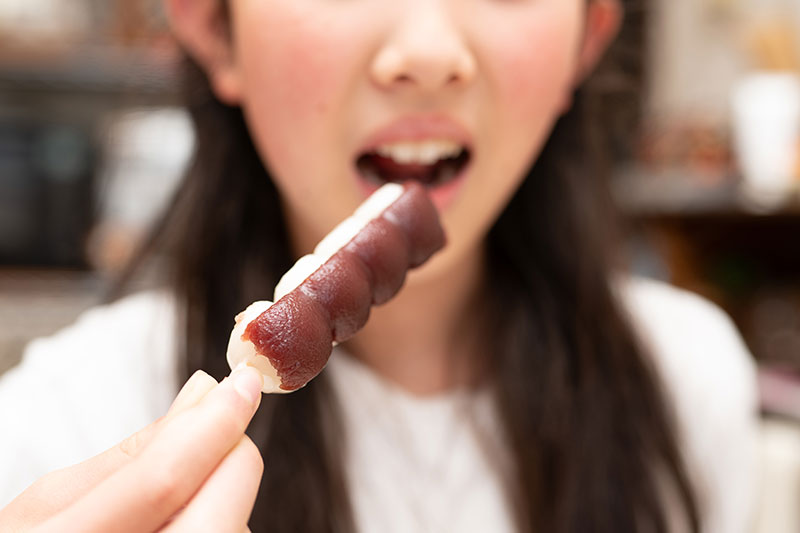
Photo for illustrative purposes only
Modern dango culture and creative dango
Traditional dango culture continues to evolve today, with new flavors and looks emerging. Influenced by globalization, Japan’s dango culture is becoming more diverse.
The rise of modern-style creative dango
Recently, creative dango with modern twists have become popular. Examples include dango topped with chocolate sauce or colorful sprinkles, appealing especially to younger generations and foreign tourists. These creative dango emphasize visually striking appearances ideal for social media, becoming a new form of Japanese cultural expression.
Flavors like matcha or fruit-infused dango are now available, offering varieties never seen before. These new dango retain traditional preparation methods while adapting to contemporary tastes, showcasing the flexibility and creativity of Japanese food culture. Tourist spots often sell these with explanations geared toward foreigners.
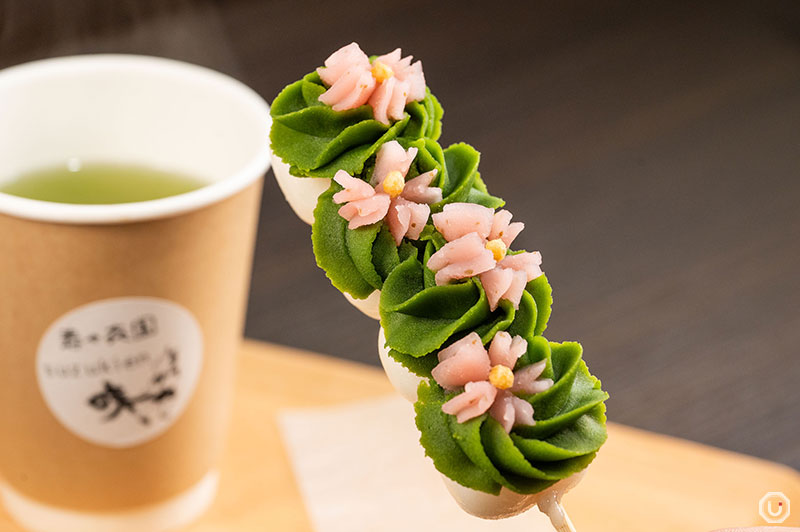
‘“Suzukien Asakusa Honten”‘ serves Seasonally limited “Sakura and Matcha An Dango” (includes green tea when eating in-store)
If you want to try the exquisite dango from “Suzukien Asakusa Honten,” check out this article:
Regional varieties of dango
Japan has distinctive dango varieties unique to each region. Examples include dango made with Hokkaido milk, Okinawa brown sugar dango, and Kyoto Uji matcha dango, reflecting local specialties. These regional dango offer special delights when traveling around Japan.
For example, in the Tohoku region, there are special rice flour dumplings that make use of the area’s renowned rice production, and in Kyushu, dumplings made with shōchū liquor lees—geared towards adults—are also sold. By enjoying these regionally distinctive dumplings, you can gain a deeper understanding of the cultural diversity found throughout Japan.
Summary
Dango is a traditional Japanese confection made from simple ingredients—rice flour and water—boasting a unique chewy texture and a wide variety of flavors. Varieties such as mitarashi, anko, kinako, and hanami dango each carry deep historical and cultural meanings, closely tied to Japan’s seasons and festivals, making dango an important part of Japanese food culture.
From authentic experiences at wagashi shops to enjoying dango while strolling through festivals, or grabbing a quick treat at convenience stores, there are many ways to savor dango, each offering a different atmosphere and taste. In modern times, alongside traditional dango, creative and regionally unique varieties have also emerged, adding diversity to the dango culture.
When traveling in Japan, be sure to try various types of dango and also appreciate the history and culture behind them. Through this small, round sweet, you can feel the Japanese sense of seasonality, aesthetic appreciation, and sincere dedication to food, leading to a deeper understanding of Japanese culture.
